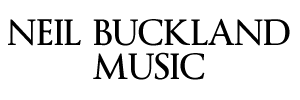‘My dear friend, all theory is grey – life’s golden tree alone is green.’* – Goethe
Not so long ago, we who were brought up in western cultures were taught to believe that nature was ruthlessly competitive, that ‘survival of the fittest’ operated at all levels of life, from species to individuals. These ‘grey’ theories (as Goethe would surely have called them) became the dominant paradigm in western thinking, supported and reinforced by our emphasis on individualism and interpersonal competitiveness, and by our veneration of science that abstracts itself from life and love and only deals with what is measurable and (allegedly) rational. Eventually, however, anthropologists started to realize that humanity’s ability to cooperate might have been more important to its survival than competitiveness, psychologists began to realise the importance for mental health of social connection and the devastating effects of loneliness, and neuroscientists began to discover ‘social brain networks’, the ‘cuddle hormone’ (oxytocin), and so on. We had long known about cooperative social structures in other animal species (wolves, chimpanzees, etc.), but more recently we have discovered that even trees form communities, warn each other against predators, share information and nutrients – ‘mother’ trees even ‘suckling’ their young – through root systems connected to each other via massive networks of symbiotic fungal hyphae, sometimes wittily labelled the ‘wood-wide web’.
Many scientists would now say that humanity survived and flourished precisely because of its social instincts and cooperativeness, its ability to share, work together, and form organic communities not unlike the tree communities in forests, with their innumerable invisible but nourishing interconnections.
My new orchestral composition, Life’s Golden Tree (available on YouTube, Spotify, Apple Music, Amazon etc.), is a reflection of and on life in all its forms, and on the profusion of life, with all its interconnections and interdependences, and its constant changes. In Life’s Golden Tree the main ideas or themes all go through organic processes of change and growth as the music passes through stages that mirror the stages of a human life. In this living sound-world, as in biological life, there is almost no literal repetition, only constant evolution – and sometimes transformation. This can be heard most clearly with the ascending figure that first appears at 0’26 and begins the long melody at 2’52: every time it, or part of it, reappears it is different: still recognisably itself, but different in tempo, instrumentation, harmonisation, dynamics, pitch, and in the musical material that precedes and follows it. The differences are sometimes small, sometimes great, sometimes subtle, sometimes obvious; sometimes it appears as a succinct statement, sufficient unto itself; sometimes a part of it seems to sprout and multiply independently; sometimes it turns into a seed that germinates, grows and flowers into a full-blown melody – and when it grows into a melody, the melody is also different each time, the music always evolving.
The process of composition of Life’s Golden Tree also reflects Goethe’s comment on the difference between theory and life: when I started writing it I had no plan, not even the vaguest idea of where my initial musical ideas were heading, what shape, tone, instrumentation, form or tempo they would take, or what the title, theme, length or shape of the completed composition would be. The music just grew of its own accord, all the ideas and all their modifications and transformations arising spontaneously from my subconscious** when I was in receptive states of mind. I then had to work consciously with the ideas my subconscious had given me in order to address practical considerations (do the instruments my subconscious is suggesting have the range and expressive capabilities needed for this idea? and similar questions). But once I had taken account of the practical constraints, even decisions on matters like these were made intuitively, not according to some preconceived idea, plan or theory.
This process is in many ways similar to what Swiss psychiatrist Carl Jung called ‘active imagination’: ‘the process of allowing contents of the personal and collective unconscious** to emerge freely while maintaining some working relationship to images, feelings, sensations and thoughts springing forth from the unconscious into consciousness. It is the process of turning attention within, toward one’s inner world and then expressing it creatively, while maintaining a reflective and psychological point of view’ (Lori Goldrich, Ph.D.).
Active imagination is used in Jungian psychology to further self-awareness and personal growth. I use this approach when composing in order to tap into the infinite resources of the unconscious mind (both my own personal unconscious and the collective unconscious we all tap into). The aim is to create music that – rather than being an intellectual game, or the product of lifeless grey theory, or of a desire to compete with other composers – grows organically out of that deep, incredibly fertile soil, the deepest part of my nature and everyone’s, the ‘wood-wide web’ of the mind.
* Grau, teurer Freund, ist alle Theorie / Und grun des Lebens goldner Baum. – Goethe, Faust
My dear friend, all theory is grey – / Life’s golden tree alone is green. (translated by Robertson Davies)
** ‘Subconscious’ is the lay term for what psychologists call ‘the unconscious’ – I use these terms interchangeably. In Jung’s conception of human psychology there are two levels of the unconscious mind: the personal unconscious, unique to each individual, and the collective unconscious, a level on which we all (unconsciously of course) share instincts, ancestral memories and universal primordial images or ideas, referred to as ‘archetypes’ (one of these archetypes, interestingly, is the Tree of Life. It is also possible that Jung was a descendent of Goethe, who he admired greatly – but these are discussions for another time, another place).

Leave A Comment